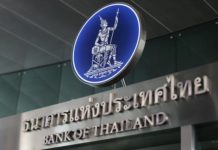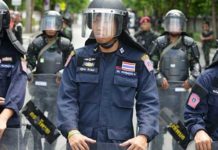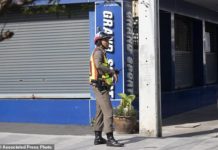Thailand has been tinkering with its schools and universities for years, to little effect: It still overspends and under-delivers.
Now Southeast Asia’s second-largest economy has seen its fastest decline in more than two decades after being battered by the coronavirus, and students are protesting.
It’s no accident that one of their demands is a serious overhaul of a system that places compliance and conformity over thinking and learning.
Better education is far from the only, or even the main, request voiced during student-led demonstrations that have been gathering pace for weeks.
Marchers want a revamped constitution and fresh elections; they have broken a long-held taboo by calling for changes to the monarchy.
Yet a school system that castigates minor violations of dress and grooming rules, overlooks violent, abusive teachers and produces mediocre results is a microcosm of the systemic rigidity that has brought growing numbers onto the streets.
Prime Minister Prayuth Chan-Ocha’s government isn’t blind to the country’s combination of sluggish productivity growth and stalling investment.
Over recent years its rate of expansion has lagged far behind neighbors like Vietnam, and even Malaysia. That should be an economic incentive to listen, and act accordingly.
Real change, though, requires slashing the ministerial bureaucracy, decentralizing, and allowing freedom of thought in the classroom — near-impossible steps for a former junta head who doesn’t know what he is doing and leading an unruly coalition.
To his credit, Education Minister Nataphol Teepsuwan has more than once addressed uniformed high-schoolers massing outside his office.
Yet his plan, the latest in a string of initiatives over recent years, is still heavy on buzzwords and light on action.
Throwing other people’s money at the problem won’t be enough.
Education has regularly amounted to a fifth of government spending, even if that proportion has shrunk of late — yet as much as 80% is consumed by fixed costs like salaries, with little apparent reward.
Teachers climb the ranks regardless of student results, so it’s perhaps unsurprising that in both national tests and international lists, scores are grim.
The Organisation for Economic Cooperation and Development’s most recent assessment, published last year, pointed to deteriorating reading scores, now lower than in any previous review.
English skills, key for the digital economy, appear to be worsening, too, with Thailand now 74th out of 100 countries in one proficiency ranking.
And it’s deeply unequal, with a wide gap between small, rural institutions and urban ones.
Political turnover doesn’t help. Over the past two decades, Thai education ministers have on average stayed in place for less than a year.
Little has changed beyond the superficial: As access to instruction increased significantly after a landmark 1999 act, but the effect was shallow.
Even high-profile efforts like then-prime minister Yingluck Shinawatra’s “one tablet per child” pledge amounted to little.
The private supplier struggled to deliver the number required, foundered, and the junta eventually scrapped the policy.
Prayuth promised change back in 2014, but has instead pushed Thai morals and values, hardly the 21st-century overhaul and devolution that was needed.
In a country where university students have uniforms, even the loosening of school haircut rules is a small victory for individualism.
It’s nowhere near enough. For now, the greatest source of optimism is high-school students themselves.
Even in a stifling environment, they have spoken out. They deserve to be heard.










































